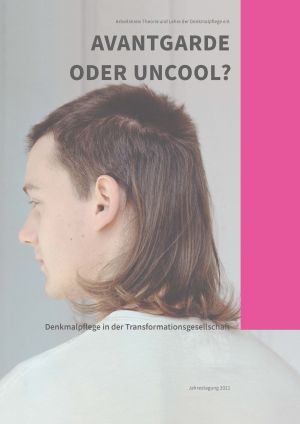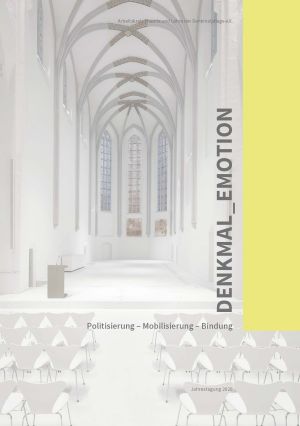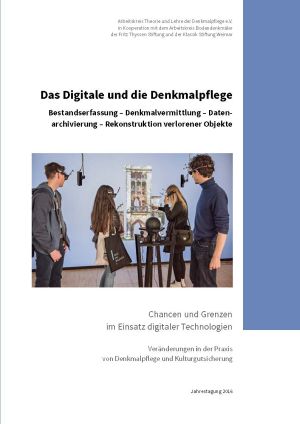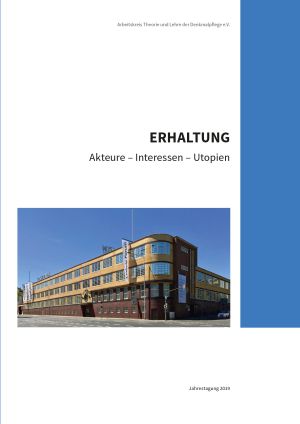Spiegel, Daniela
Kulturreformer. Rassenideologe. Hochschuldirektor: Der lange Schatten des Paul Schultze-Naumburg
Being a co-founder of important institutions like the Werkbund and the Deutscher Bund Heimatschutz, Paul Schultze-Naumburg (1869-1949) belongs to the most important representatives of German cultural history of the early 20th century. After the First World War, though, the painter, author, entrepreneur, architect and politician radicalised himself developing an increasingly racist attitude and joining the NSDAP at an early stage.
From 1930 to 1940 Paul Schultze-Naumburg directed the “Staatliche Hochschulen für Baukunst, bildende Künste und Handwerk“ in Weimar. In his attempt to align the former Bauhaus with the new rulers' ideology, he developed an explicitly anti-modern didactic concept which focused on glorifying the tradition of german craftsmanship.
This volume takes a closer look at Paul Schultze-Naumburgs life and work as well as at the profile the Hochschule Weimar was given under his directorship. Further, the impact of this contradictory, difficult personality are discussed. The book presents the results of a scientific symposium, organized by the Bauhaus-Institut für Geschichte und Theorie der Architektur und Planung which was held at the Bauhaus-Universität Weimar on December 3rd & 4th, 2015.
Avantgarde oder uncool? Denkmalpflege in der Transformationsgesellschaft
Under the deliberately provocative title "Avantgarde or uncool?", this volume examines traditions of how heritage preservation is perceived by itself and by others. The background to this critical review is the question of the necessity of repositioning the profession - not only in view of the current challenges of climate change, but also the increasing political and social need for participation. The volume thus brings together not only reflections on the profession's self-image in times of change, but also on professional positions in relation to current issues such as participation, climate change and diversity.
Denkmal_Emotion: Politisierung – Mobilisierung – Bindung
The "emotional turn", it seems, has meanwhile arrived in the field of Heritage Studies. The connection between emotions and heritage/monuments can be regarded as a reciprocal and interdependent relationship. Understood as an integral part of processes of individual and collective meaning-making, emotions are being reconceived as a formative aspect of valorization, appropriation and rejection rather than their mere by-product, and as such are being recognized as constitutive for the field of heritage conservation. The essays gathered here reflect in their range the different facets of the complex relationship between Heritage Studies and emotions, be it in relation to the political dimensions of that relationship, to the development of new emotional points of reference or to very concrete processes of the appropriation or rejection of heritage.
Das Digitale und die Denkmalpflege: Bestandserfassung – Denkmalvermittlung – Datenarchivierung – Rekonstruktion verlorener Objekte
The ‘digital revolution’ is now in full swing. For heritage conservation, digital tools have opened new perspectives, finding application in the interactive visualization of past situations, the monitoring of threatened sites and artefacts, or the complex cross-referencing of heterogeneous collections of knowledge. At the same time, the limits and unsolved problems associated with using digital technologies are also becoming more apparent, for example with regard to maintaining the rapidly-growing volumes of data being generated.
And yet with digitization, we are not dealing primarily with a ‘technical’ innovation. Thus the effort to conserve digital heritage, including documenting, researching and publishing cultural assets, will transform more than just the institution of the museum. The new abundance of digitally-generated images can also be seen to be changing the standards of the scientific and academic discipline. A further and as yet underappreciated aspect of the digital revolution is the way it is rearranging the foci of attention in the knowledge ‘market’.
Perhaps the most noticeable consequence of digitization’s promise of exact and comprehensive reproduction is the knee-jerk insistence, following every instance of the spectacular destruction of a famous monument, on creating a reconstruction. Here it is clear that an affinity for reconstruction is inherent in the digital, to the extent that its primary feature is its capacity to translate all information into binary code, to capture and copy exactly, supposedly without loss of detail. In the digital age, the distinction between original and copy will therefore lose relevance – at the cost of a total manipulability of data, and of reality.
Erhaltung: Akteure – Interessen – Utopien
The will to preserve the architectural cultural heritage can be considered one of the cornerstones of heritage conservation theory and practice. In addition to this seemingly common, overarching goal, however, a closer look reveals a broad spectrum of different objectives and priorities. These are each closely linked to the social contexts and the people involved. For what is understood by preservation and what is to be preserved in a monument is to a large extent related to what is considered to constitute its value - and is thus dependent not only on the constantly changing technical prerequisites, but also on personal and social attributions of value.











